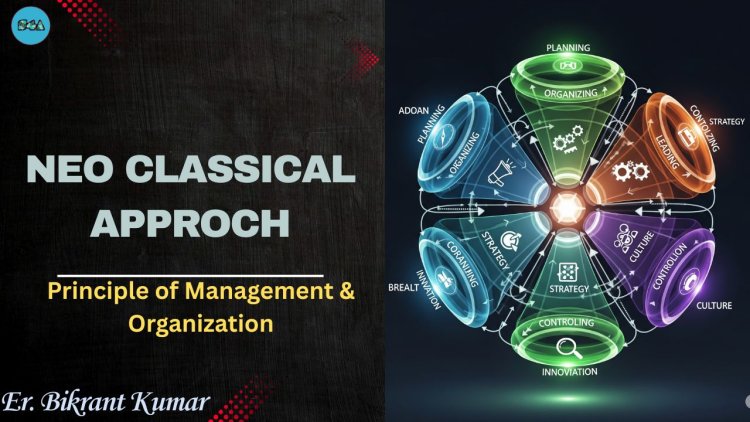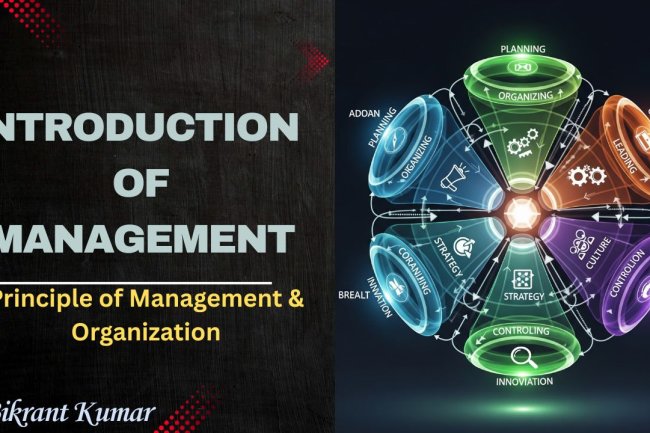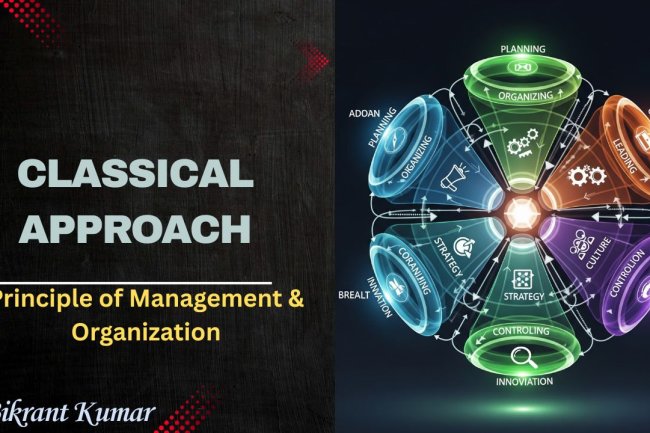Neo-Classical approach
Principle of Management

The Neo-Classical Theory of Management emerged as a response to the limitations of the Classical Theory. While Classical Theory focused only on structure, tasks, and productivity, the Neo-Classical Theory added an important human element — people’s needs, emotions, and relationships in the workplace.
Duration:
1930s to 1950s (still influences modern HR and management)
Objective:
To improve organizational productivity by focusing on human relations, motivation, communication, and employee satisfaction.
Main Types of Neo-Classical Theory:
- Human Relations Theory
- Behavioral Science Theory
Human Relations Theory
- Author: Elton Mayo
- From: Australia (worked in the USA)
- Developed in: 1930s
- Based On:
- Hawthorne Experiments (1924–1932) at Western Electric Company, USA
Objective:
Understand how social factors, group dynamics, and employee feelings affect productivity.
Key Concepts:
- Workers are social beings, not just economic tools
- Informal groups and relationships affect work
- Employee motivation improves with attention, recognition, and participation
- Communication is key for job satisfaction
Principles:
- Participation in decision-making increases morale
- Good human relations improve productivity
- Informal groups influence behavior
- Leadership should be friendly and cooperative
Advantages:
- Improved employee morale
- Better teamwork and communication
- Recognizes the importance of social needs
Disadvantages:
- Lacks scientific structure
- Focus too much on emotions, not enough on performance
- Informal groups can resist change
Real-life Example:
In a call center, when team leaders regularly appreciate employees, involve them in decisions, and celebrate birthdays, the team morale and performance increases.
Behavioral Science Theory
Key Authors:
- Abraham Maslow (USA) – Hierarchy of Needs
- Douglas McGregor (USA) – Theory X and Theory Y
- Chris Argyris (USA) – Personality and Organization
- Rensis Likert (USA) – Management Systems
Developed in: 1940s–1950s
Objective:
Use psychology, sociology, and behavioral sciences to understand and improve employee behavior and motivation in the workplace.
Maslow’s Hierarchy of Needs:
Concept: People have 5 levels of needs. Motivation increases as each level is satisfied.
- Physiological (food, water)
- Safety (job security)
- Social (friendship)
- Esteem (respect, recognition)
- Self-actualization (growth, creativity)
Real-life Example:
In a school, teachers perform better when their basic needs (salary), safety (secure job), and social environment (supportive staff) are met.
McGregor’s Theory X and Theory Y:
- Theory X: Employees are lazy, dislike work, need control
- Theory Y: Employees are motivated, creative, want responsibility
Real-life Example:
A manager who believes in Theory Y lets the team work independently, encourages innovation — leading to better results.
Chris Argyris – Personality and Organization:
Concept:
Organizations should match their structure with the maturity and personality of employees. Rigid systems demotivate people.
Real-life Example:
In IT companies, flexible hours and remote work increase employee satisfaction and performance.
Rensis Likert – 4 Systems of Management:
- Exploitative authoritative – Strict control
- Benevolent authoritative – Soft control
- Consultative – Some employee involvement
- Participative – Full employee involvement
Best system: Participative management
Real-life Example:
Modern startups often use participative systems where employees help set goals and solve problems.
Core Concept of Neo-Classical Theory (in Human Language):
“People are not robots. To get the best out of them, you must care about how they feel, how they are treated, and how they relate to others at work.”
It brings in the human touch to management.
Advantages of Neo-Classical Theory:
- Improves employee motivation and morale
- Better teamwork and communication
- Focuses on human needs and relationships
- Promotes flexible leadership styles
Disadvantages:
- May ignore technical and structural aspects
- Too much focus on feelings can reduce productivity
- Hard to measure emotions scientifically
- Can be manipulated by informal groups
Comparison Table Summary:
|
Type |
Author(s) |
Focus |
Key Idea |
Example |
|
Human Relations |
Elton Mayo |
Social needs and motivation |
People perform better when valued |
Call center with team bonding |
|
Behavioral Science |
Maslow, McGregor, Likert, etc. |
Psychology and behavior |
Motivation, leadership, needs |
Modern startups and HR policies |
Real-Life Combined Example:
In a modern tech company:
- Maslow’s Needs: Employees are given good salary, health insurance, team outings, and growth opportunities.
- McGregor’s Theory Y: Managers believe employees are self-motivated and offer flexibility and independence.
- Participative Leadership: Teams collaborate in meetings, suggest ideas, and share goals.
This kind of workplace reflects Neo-Classical Thinking — focusing on people, not just productivity.
------------------------------
Files
What's Your Reaction?















